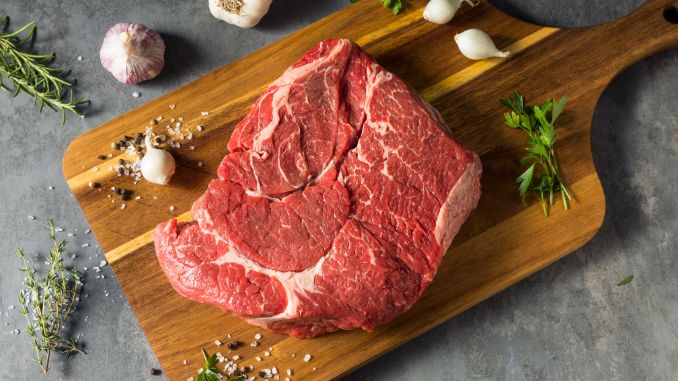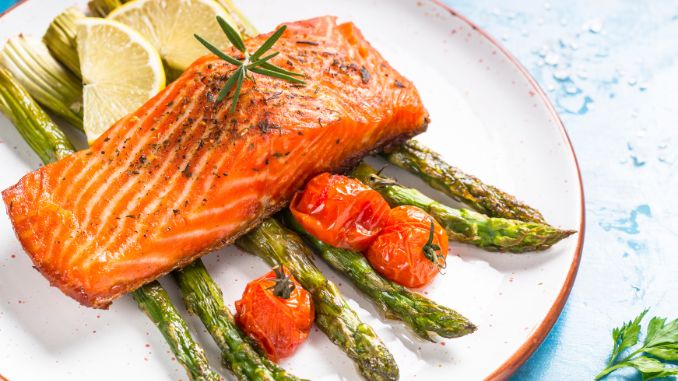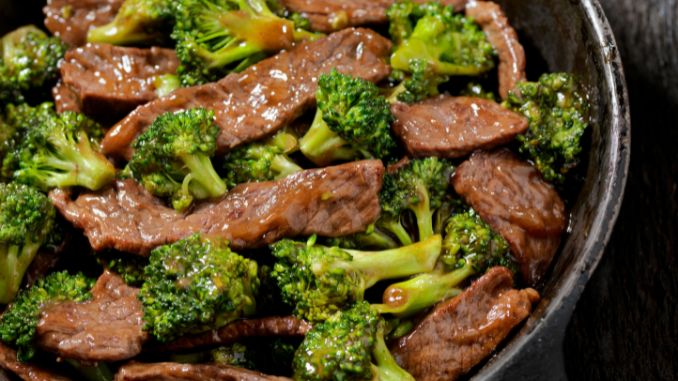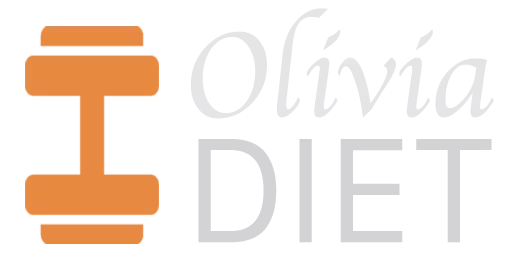Unveiling The Secrets Of Our Ancestral Diet: A Journey Back To Optimal Health And Nutrition

Last updated on April 15th, 2025 at 06:05 pm
Step into the past with our feature article, “Unveiling the Secrets of Our Ancestral Diet: A Journey Back to Optimal Health and Nutrition.” As we trace the footsteps of our ancestors, we discover the key nutritional strategies that have stood the test of time.
This exploration into ancient diets sheds light on their significant benefits for today’s health, debunking myths and highlighting the power of unprocessed whole foods.
Equip yourself with knowledge from centuries ago to craft a modern diet that elevates your health and vitality today.
Understanding The Benefits Of An Ancestral Diet
Our ancestors had an intimate connection with nature and relied on the foods available to them in their environment. They did not have access to processed or refined foods; our ancestors ate mainly whole, unprocessed foods. This natural way of ancestral eating provided them with numerous health benefits, including Improved Digestion, Increased Energy Level, and Enhanced Overall Well-Being.
Research has shown that following an ancestral diet can profoundly impact our health. By consuming foods our bodies are biologically adapted to, we can optimize our nutrient intake and support our genetic makeup. An ancestral diet focuses on nutrient-dense foods [²] that provide the necessary vitamins, minerals, and antioxidants for optimal health and longevity.
Key Benefits Of An Ancestral Diet
- Improved Health Markers: Reduces blood pressure triglycerides and improves insulin sensitivity.
- Nutrient-rich foods: Provides essential vitamins, minerals, and fatty acids from whole foods.
- Weight Management: Supports healthy weight loss and maintenance through balanced eating.
- Enhanced Digestion: Promotes gut health with fiber-rich fruits, vegetables, nuts, and seeds.
- Mental Well-being: Supports cognitive function and reduces inflammation with omega-3 fatty acids and antioxidants.
- Sustainable and Ethical: Encourages environmentally friendly and ethical food sourcing practices.
- Reduced Chronic Disease Risk: Lowers the likelihood of developing chronic illnesses linked to processed foods.
- Natural and Unprocessed: Emphasizes eating foods naturally, avoiding additives and preservatives.
The Science Behind Ancestral Diet And Its Impact On Health
The science behind the ancestral diet is rooted in our evolutionary history and genetic adaptations. Our ancestors thrived on lean meats, fish, fruits, vegetables, nuts, and seeds, which provided essential nutrients for physical and cognitive development.
Research highlights that diets prevalent today [¹],characterized by high levels of processed foods, unhealthy fats, and refined sugars, are major contributors to chronic diseases, including heart disease, diabetes, and cancer.
While an ancestral diet rich in whole, nutrient-dense foods can improve health markers like blood pressure, triglycerides, and insulin sensitivity.
Additionally, an ancestral diet's omega-3 fatty acids and antioxidants support mental well-being and cognitive function, reducing the risk of age-related cognitive decline.
Key Principles Of The Ancestral Diet
The ancestral diet draws inspiration from the eating habits of our hunter-gatherer ancestors. While the specific foods may vary depending on geographical location and cultural practices, several key principles remain consistent across ancestral diets.
1. Focuses On Whole, Unprocessed Foods

Firstly, an ancestral diet focuses on whole, unprocessed foods. This means avoiding foods undergoing extensive processing, such as refined grains, added sugars, and artificial additives. Instead, the emphasis is on consuming natural foods like fruits, vegetables, lean meats, fish, nuts, and seeds.
2. Prioritizes Nutrient Density
This means choosing foods packed with essential vitamins, minerals, and antioxidants. Nutrient-dense foods include leafy greens, colorful fruits and vegetables, wild-caught fish, grass-fed meats, and organ meats. These foods provide various essential nutrients that support overall health and well-being.
3. Inclusion Of Healthy Fats
Our ancestors relied on animal fats, such as those in fatty fish and grass-fed meats, and plant-based fats from nuts, seeds, and avocados. These fats are crucial for hormone production, brain health, and the absorption of fat-soluble vitamins.
4. Balanced Macronutrient Ratio

Additionally, an ancestral diet promotes a balanced macronutrient ratio. This means consuming a combination of proteins, fats, and carbohydrates in proportions suitable for individual needs.
While the specific ratios may vary, the general recommendation is to emphasize high-quality protein sources, healthy fats, and complex carbohydrates from fruits, vegetables, and whole grains.
Ancestral Diet Vs. Paleo Diet
“ancestral diet” and “paleo diet” are often used interchangeably but have subtle differences.
Both emphasize whole, unprocessed foods, but the ancestral diet focuses more on quality and sourcing. The paleo diet includes foods from the Paleolithic era, such as lean meats, fish, fruits, vegetables, nuts, and seeds. It allows certain modern foods like honey and coconut oil.
In contrast, the ancestral diet emphasizes grass-fed and pasture-raised meats, wild-caught fish, and organic produce and supports sustainable, ethical sourcing practices.
Ancestral Diet Food List
Incorporating the right foods into an ancestral diet is key to reaping its benefits.
Here are some essential foods to include:
1. Pasture-Raised And Grass-Fed Meats

Meat from animals raised in their natural habitat contains higher levels of nutrients and healthier fats, like omega-3 fatty acids.
2. Wild-Caught Fish
Fatty fish, such as sardines and salmon, are excellent sources of omega-3 fatty acids, which are crucial for brain health and reducing inflammation.
3. Organic Fruits And Vegetables
Choosing organic options can minimize pesticide exposure and ensure a higher nutrient content.
4. Nuts And Seeds
Almonds, walnuts, chia seeds, and flaxseeds contain healthy fats, fiber, and essential minerals.
5. Eggs
Free-range or pasture-raised eggs are rich in protein, vitamins, and minerals.
7. Healthy Fats
Olive oil, avocados, coconut oil, and grass-fed butter are excellent sources of healthy fats.
8. Fermented Foods
Sauerkraut, kimchi, and kefir provide beneficial probiotics that support a healthy gut.
Remember to prioritize variety and choose organic, local, and sustainably sourced options whenever possible. Including these nutrient-dense foods in your diet helps nourish your body and enjoy the advantages of an ancestral eating style.
Foods To Avoid In An Ancestral Diet
To fully embrace the ancestral diet, it is important to minimize or eliminate certain foods that are not in line with our evolutionary history.

Here are some foods to avoid:
- Processed and Refined Foods include packaged snacks, sugary cereals, sodas, and fast food, often high in unhealthy fats, added sugars, and artificial additives.
- Grains: While some ancestral diets allow for whole grains, others recommend avoiding grains altogether. This includes wheat, corn, rice, and other cereal grains.
- Legumes: Although legumes can be a source of plant-based protein, they contain anti-nutrients that can interfere with nutrient absorption. This includes beans, lentils, and peanuts.
- Dairy Products: Dairy is a common allergen and can cause digestive issues for some individuals. If consumed, it is recommended to opt for high-quality, fermented dairy products.
- Refined Vegetable Oils: Highly processed vegetable oils, such as soybean, corn, and canola oil, often contain an imbalance of omega-6 fatty acids, leading to inflammation.
- Added Sugars: This includes table sugar, high-fructose corn syrup, and artificial sweeteners, which can lead to weight gain, insulin resistance, and various chronic diseases.
By avoiding or minimizing these foods, you can better align your diet with the principles of the ancestral diet and optimize your health and well-being.
Ancestral Diet Recipes
Incorporating ancestral diet principles into your daily life doesn't have to be complicated or boring.
Here are a few delicious and nutritious recipes to get you started:
1. Grilled Salmon With Roasted Vegetables

Ingredients:
- 2 salmon fillets
- Assorted vegetables (such as broccoli, bell peppers, and zucchini)
- Olive oil
- Lemon juice
- Garlic powder
- Sea salt and black pepper
Instructions:
- Start the grill and preheat the oven to 400°F (200°C).
- Drizzle the salmon fillets and vegetables with olive oil and lemon juice.
- Season the salmon and vegetables with garlic powder, sea salt, and black pepper.
- Grill the salmon for 4-6 minutes per side, adjusting the time to achieve your preferred doneness.
- Place the seasoned vegetables on a baking sheet and roast in the oven for 15-20 minutes or until tender.
- Serve the grilled salmon with the roasted vegetables, and enjoy!
2. Herb-Roasted Chicken With Sweet Potato Mash

Ingredients:
- 2 chicken breasts
- Fresh herbs (such as rosemary, thyme, and sage)
- Sweet potatoes
- Broccoli (optional)
- Grass-fed butter or ghee
- Sea salt and black pepper
Instructions:
- Preheat the oven to 425°F (220°C).
- Season the chicken breasts with fresh herbs, minced garlic, sea salt, and black pepper.
- Place the chicken on a baking sheet and roast in the oven for 25-30 minutes or until the internal temperature reaches 165°F (74°C).
- While the chicken is cooking, wash and chop the broccoli and sweet potatoes. Boil the broccoli until tender-crisp and the sweet potatoes until tender, then drain both.
- Mash the sweet potatoes with grass-fed butter or ghee, minced garlic, sea salt, and black pepper.
- Serve the herb-roasted chicken with the sweet potato mash and steamed broccoli, and enjoy!
These recipes showcase the deliciousness and versatility of an ancestral diet. Feel free to adapt them to your preferences and experiment with different ingredients and flavors.
3. Beef And Vegetable Stir-Fry

Ingredients:
- 1 lb grass-fed beef strips
- Broccoli
- 1 tablespoon coconut oil
- 2 garlic cloves, minced
- 1 tablespoon freshly grated ginger
- 2 tablespoons coconut aminos (or soy sauce alternative)
- 1 teaspoon sesame oil
- Sea salt and black pepper
Instructions:
- Heat the coconut oil in a large skillet or wok over medium-high heat.
- Add the beef strips to the skillet. Season with sea salt and black pepper. Stir-fry until the beef is browned and nearly cooked, about 3-4 minutes.
- Add the minced garlic, grated ginger, and assorted vegetables including broccoli to the skillet.
- Stir-fry for another 5 to 7 minutes or until the vegetables are tender yet crisp.
- Drizzle the coconut aminos and sesame oil over the stir-fry.
- Mix well to combine and heat through for an additional minute.
- Remove from heat and serve hot. Optional: Garnish with sesame seeds or fresh herbs like cilantro for extra flavor.
Ancestral Diet Meal Plan

To help you get started on your ancestral diet journey, here's a sample meal plan for one day:
Breakfast:
- Scrambled eggs with sautéed spinach and mushrooms
- Sliced avocado
- Berries
Lunch:
- Grilled chicken salad with mixed greens, cherry tomatoes, cucumber, and a drizzle of olive Oil and lemon juice
- Handful of almonds
Afternoon Snack:
- Carrot sticks with almond butter
- Hard-boiled eggs
Dinner:
- Baked salmon with steamed broccoli and cauliflower rice
- Side salad with mixed greens, tomatoes, and balsamic vinaigrette
Evening Snack:
- Apple slices with almond butter
Listen to your body's fullness and hunger cues and adjust portion sizes accordingly. Feel free to modify this meal plan to suit your needs and preferences.
Tips For Transitioning To An Ancestral Diet
Transitioning to an ancestral diet can be a gradual process.
Here are some tips to help you make a smooth transition:
- Start by taking out processed and refined foods from your diet. Replace them with whole, nutrient-dense alternatives.
- Gradually reduce your intake of grains and legumes, and focus on incorporating more vegetables, fruits, and healthy fats.
- Experiment with new recipes and flavors to keep your meals interesting and enjoyable.
- Plan your meals and snacks to ensure you have nourishing options readily available.
- Listen to your body and how different foods make you feel. Adjust your diet accordingly.
- Seek support from like-minded individuals or a health professional who can guide you through the transition process.
Remember, transitioning to an ancestral diet is a personal journey, and it's important to find an approach that works for you and your lifestyle.
Conclusion
The ancestral diet offers a profound look into our evolutionary past and provides a blueprint for achieving optimal health today.
By adopting its principles, we can consume nutrient-rich foods, support our genetic needs, and lessen the risk of chronic diseases such as diabetes, cardiovascular disease, and cancer Key components include pasture-raised meats, wild-caught fish, organic produce, and healthy fats.
While adopting this diet may require adjustments and experimentation, the resulting benefits to health and well-being are significant. Embrace this nourishing approach to unlock your body's potential and embark on a healthier, more vibrant future.
Are you ready to transform your health and well-being? Our Anti-Inflammatory Cookbook Bundle is here to guide you on a delicious journey toward a healthier, inflammation-free life!
Rick Kaselj MS, is a leading kinesiologist and injury specialist as well as co-creator of the best-selling Unlock Your Hip Flexors program. Rick creates exercise programs that help people heal injuries and eliminate pain, so they can go back to living a full, active, healthy life.






